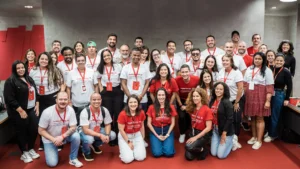McKinsey study shows how food retail can adapt to the new economic scenario and make plans to grow
In 2022, the economic scenario presents a major challenge to Brazilian retail. The combination of high inflation (10.1%) and reduced income (5.8%) affected consumers' purchasing power in 2021, causing food sales to fall by 2.4% compared to 2020, according to a study carried out by McKinsey consultancy.
Although the average purchase ticket in markets increased by 8% — from R$ 62 to R$ 67 between 2020 and 2021, driven by rising prices —, the frequency of purchases fell. To overcome rising costs or improve their diet, Brazilians are changing their behavior, and McKinsey points out trends for food retail to follow these changes and grow in the coming years.
Greater price sensitivity
In times of crisis, loyalty to brands gives way to loyalty to the lowest price. In 2021, 40% of consumers switched from their usual products to cheaper brands — in 2020, this rate was 29%. The categories most impacted by this behavior were rice and cleaning and laundry products.
Another search, released in April 2022 by Sincovaga (São Paulo Food Retail Trade Union), shows that 67% changed brands more than once to save money. This happened most in the categories of hygiene and cleaning, basic items (rice, beans, flour), dairy products and meat.
“Those who take advantage of current price sensitivity to redefine their private label strategies can turn a short-term behavior change into long-term customer loyalty and profitability,” says the McKinsey report.
Expansion of 'atacarejo
Cash and carry is the only modality that has been growing: revenues have increased by 10% since 2020, contrary to the drop felt by supermarkets (-6%) and hypermarkets (-20%). In 2022, cash and carry is expected to grow by 15%, according to the consultancy. But with increased competition comes the challenge of differentiating yourself to become more attractive than other markets.
New formats for more convenience
The union of the physical and digital shopping experience will continue to encourage markets to experiment with new formats to bring more convenience to each shopping occasion. According to the report, some examples of these formats are the use of applications to make deliveries in minutes, with low or free shipping, long operating hours, the possibility of scheduled purchases of products that people constantly replace, and social shopping, inspired by Chinese models. .
Interest in healthy foods
Even wanting to save money on the market, more than half of consumers (56%) are willing to pay more for healthy and organic products, a segment that should continue to grow due to the evolution of Brazilian consumption habits, the study points out.
Organic, nutritious and functional products, therefore, will continue to gain relevance and can be a niche to promote increased retail sales. “In Brazil, the market for healthy foods that promote well-being is expected to grow at a rate of 9% per year and reach one fifth of the total packaged foods in 2030”, states the report.
Use of data in strategiesTo grow and improve both the consumer experience and the execution of its operations, retailers will increasingly have to make use of data and analytics —and embrace culture data driven. This way, it will be possible to price products more accurately, adapt the product assortment to each point of sale and personalize the shopping experience to build customer loyalty.


